Where Does Black Hole Science Go After The First Picture Of One?
Researchers who worked on the Event Horizon Telescope have released the first image of a black hole’s shadow. Now what?
On Wednesday, April 10, the world got its very first glimpse of the celestial chasms found at the core of every galaxy: a black hole. The Event Horizon Telescope (EHT) array captured the circular shadow of the supermassive black hole in the center of the galaxy Messier 87, or M87. The silhouette eclipses the photons that have been able to slip from the grip of the black hole’s most inner orbit—the intense gravitational pull of the event horizon.
“It’s the strongest evidence that we have to date for the existence of black holes,” Shep Doeleman, director of EHT, said during a press conference on Wednesday in Washington, D.C.
But, as Avery Broderick, astrophysicist at the University of Waterloo and EHT team member, later said at the announcement: “Now, what does it all mean?”
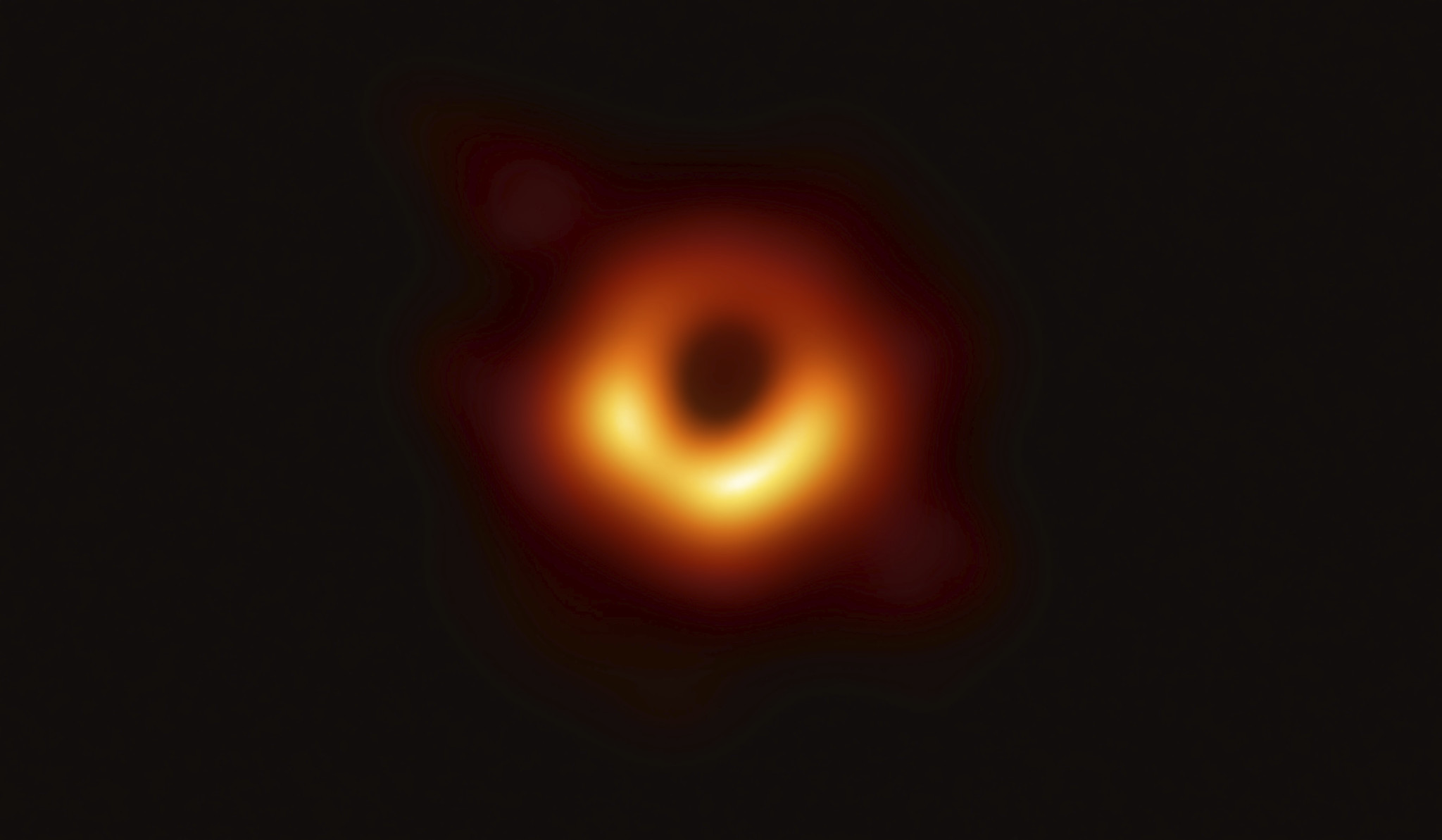
All week, Science Friday has been speaking with experimentalists and theorists in the astrophysics world about what the discovery might mean for their work. Earlier this week, before the announcement, theoretical physicists Alex Lupsasca and Ruth Gregory shared some of the potential implications of the EHT news. And on Wednesday, just hours after the first black hole image was released, astrophysicist Julie Hlavacek-larrondo at Université de Montréal—who will join Science Friday in this week’s special hour-long conversation on black holes—gave her first reactions.
These interviews have been edited for length and clarity.
Science Friday spoke to Alex Lupsasca before the release of the April 10 Event Horizon Telescope findings.
As a theoretical physicist, why are you interested in this image?
So, first, it’s hugely exciting. And like everybody else I just want to see the first picture of a black hole. So I think the sheer cool-factor of being able to see a black hole for the first time in the history of mankind is amazing. I hope it gets people excited. Certainly it has gotten us excited.
Now as a theorist, there are two things that theorists can do. The first one is to make a prediction for what the images would look like and what features they would have. So that’s one job of the theorist, to use the known laws and make predictions for experiments and then test those predictions. The second job is to try to uncover the next level of physical law. So what are the laws beyond the ones that we’ve currently discovered that we currently know. And I think that the Event Horizon Telescope and black hole physics in general is giving us the opportunity to do both of these things.
General relativity predicts that something very, very special happens when a black hole spins very rapidly. And the reason for that is that it warps spacetime so much around itself that it develops this sort of throat-like geometry. So it becomes this very, very deep gravitational well, and as it spins up faster and faster and approaches the limit, this deep gravitational well becomes infinitely deep.
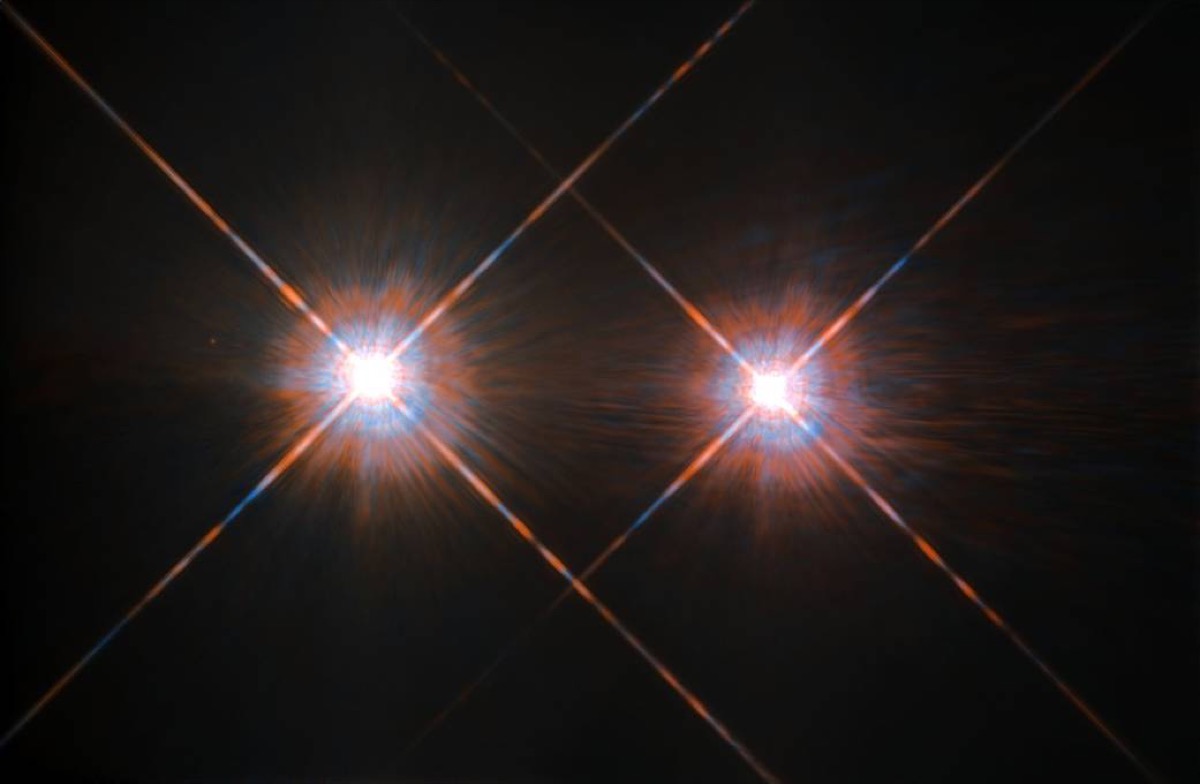
What experiment would you conduct at the event horizon if you could?
If you could actually travel there, then you could drop particles or you could shine light in various directions and you could see how the particles move or how the light propagates. And from that you would be able to infer the shape of spacetime. But obviously we’re not going to travel there. I mean the nearest supermassive black hole is the one at the center of our galaxy, Sagittarius A*, but that’s 26,000 light years away. [Ed. note: The Event Horizon Telescope also collected data from Sagittarius A*, but did not release any findings as of yet.] So right now people are fantasizing about sending probes to a nearby solar system, Alpha Centauri, which is [4.367 light years] away. So even that’s beyond the edge of our abilities. So actually traveling to a black hole is way beyond what we can hope for. But we don’t need to.
The point is we can get signals from the region around the black hole. And with LIGO, the gravitational wave observatory, we can now listen to these regions of space and get gravitational signals from them, which I think is hugely exciting.
And the Event Horizon Telescope is the electromagnetic counterpart. So it’s also looking for signals from black holes, but not using gravity but using light. I think with the two things, as our capabilities ramp up and our technology improves, we’ll be able to just look at those places and listen to them and see them and basically peer into these deep gravitational wells and we’ll be able to tell if they have this very deep throat-like region.
“Like everybody else I just want to see the first picture of a black hole. So I think the sheer cool-factor of being able to see a black hole for the first time in the history of mankind is amazing.”
What things won’t you be able to see that a theorist would want to see from this image?
I think that the easiest thing that you might have hoped to see is that the silhouette, the shape of the shadow, would have a vertical edge on the side. So usually the shadow is round but if the black hole spins very fast and you look at it from a certain angle then the shadow should actually have a vertical edge on the side. The problem is we’re not looking at [M87] from the side, we’re looking at it from above. And when you look at it from above you don’t expect to see that vertical line.
So I guess in a perfect world we’d be able to reach out and turn the black hole around and just be able to photograph it from every angle. I guess that’s what I would love. So maybe eventually the technology gets good enough we’ll be able to look at many different black holes in the sky. Then, basically we won’t be able to look at a single black hole from every angle, but black holes are supposed to be more or less identical. And so maybe you can look at many different ones in the sky, which all have different orientations, effectively, and it will be like looking at a black hole from many different angles.
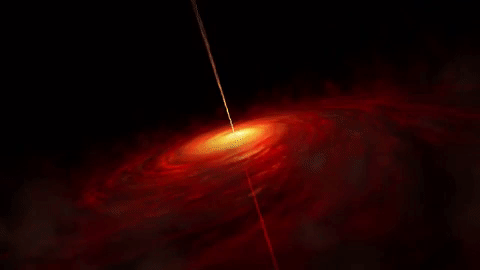
Science Friday spoke to Dr. Ruth Gregory before the release of the April 10 Event Horizon Telescope findings.
What do you research and why are you excited about the Event Horizon Telescope image?
We believe, or we’ve certainly observed, that our universe seems to be accelerating—distant stars are, if you like, dimmer than we might expect them to be. So we know the universe is expanding, but what’s unusual is that it seems to be getting faster rather than slower. If we look at what Einstein’s view on gravity says, that implies that there’s this unknown component in the energy budget of the universe that’s actually rather like Einstein’s famous cosmological constant, what he called his “biggest blunder.” It’s a very special sort of energy and we call it dark energy because we don’t really know if it’s this cosmological constant that Einstein had, or whether it’s some other exotic form of matter, or whether in fact gravity isn’t Einstein gravity and something else happens at large scales.
And black holes are where gravity is pretty much at its strongest in our universe, so I’m interested in whether they can tell us something about what this dark energy is. Already, the gravitational wave observations have kind of given us some pretty good information about what gravity can’t do on large scales. And hopefully the Event Horizon Telescope will start to give us information about what gravity can’t do on somewhat smaller scales, but where it’s very strong.
“Black holes are where gravity is pretty much at its strongest in our universe, so I’m interested in whether they can tell us something about what this dark energy is.”
Is there anything about black holes that help us unify Einstein’s theory of general relativity with quantum physics?
Actually, yes. The thing with black holes is because they are such an extreme environment, they represent where the gravitational field is so strong that that little bit of space has kind of broken contact with us. We can’t access anything inside it, so it was realized that that represents a loss of information. And so this is something which is actually quite at odds with what we usually believe to be true about quantum physics.
Theories of quantum physics don’t have this loss of information aspect to them and therefore black holes provide this challenge. They for sure are out there. They’re an end-state of bigger stars when they come to the end of their lifetime. We’ve got these supermassive black holes that seem to be at the center of most galaxies. We know they’re out there and yet we really have trouble reconciling them with what we have tested and believed to be true in quantum physics. So understanding how to put together black holes with our ideas of quantum physics does I think reveal the conceptual problems of quantum gravity. I do think black holes are a really good sounding board to test our ideas.
What doors would the EHT information open for research?
I think for people who are more directly involved in astrophysics, [the data from EHT] is going to be a different way of looking at objects in our galaxy. We have all these different telescopes based on light or radio waves, but it’s basically the electromagnetic spectrum. We’re starting to probe the gravitational spectrum. The EHT is a radio telescope, but it’s beginning to start to image things whose fundamental being, if you like, is not optical. When you see a star you’re seeing light that’s being churned out from some sort of fusion reaction. The process of producing light is an optical process, whereas with the black hole, sure you’re seeing radio waves, but what they’re imaging is something that’s not normal, it’s gravitational field. It really is quite distinct.
Up to now, if we’ve been trying to study systems out there, either binary systems or the center of galaxies, we’ve always had to deduce that this is a black hole or infer. It’s always been a second-hand observation and I think having a direct observation that’s the drama if you like, that’s the really cool thing.
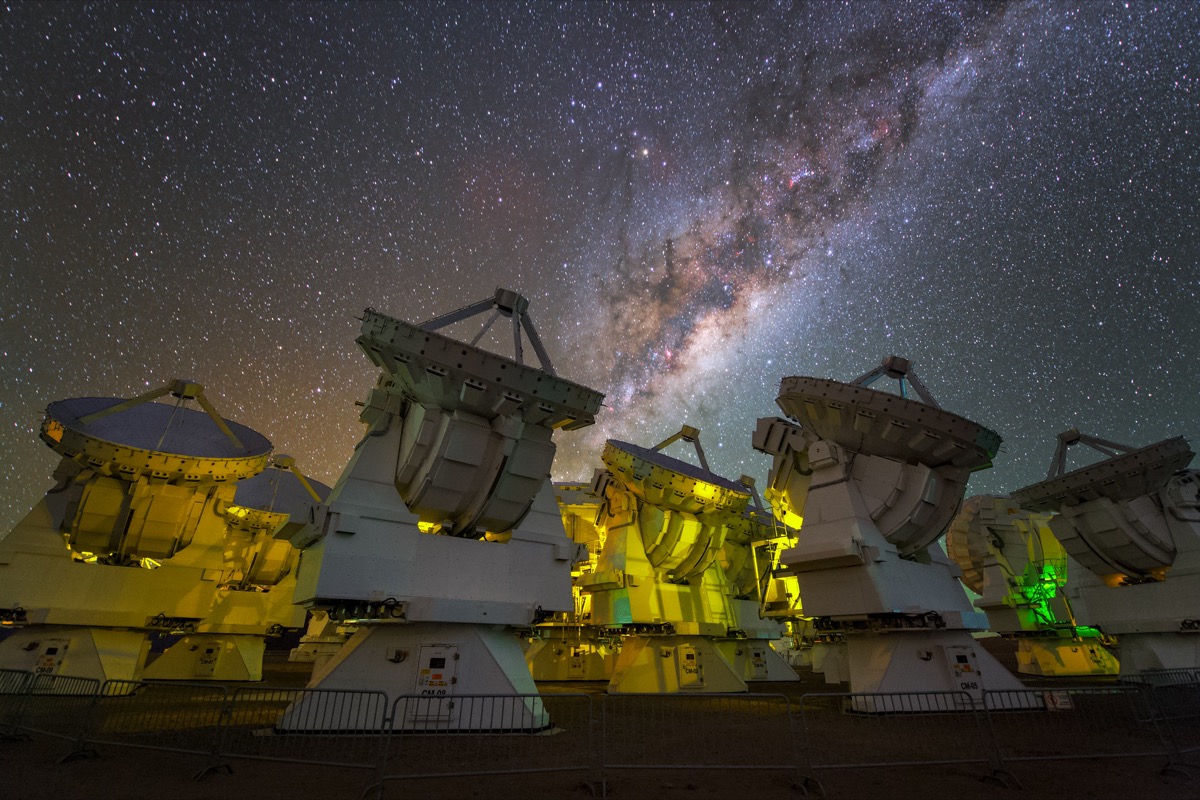
Science Friday spoke to Dr. Julie Hlavacek-Larrondo a couple hours after the release of the April 10 Event Horizon Telescope findings. Listen to Hlavacek-Larrondo on Science Friday during our black hole discussion tomorrow.
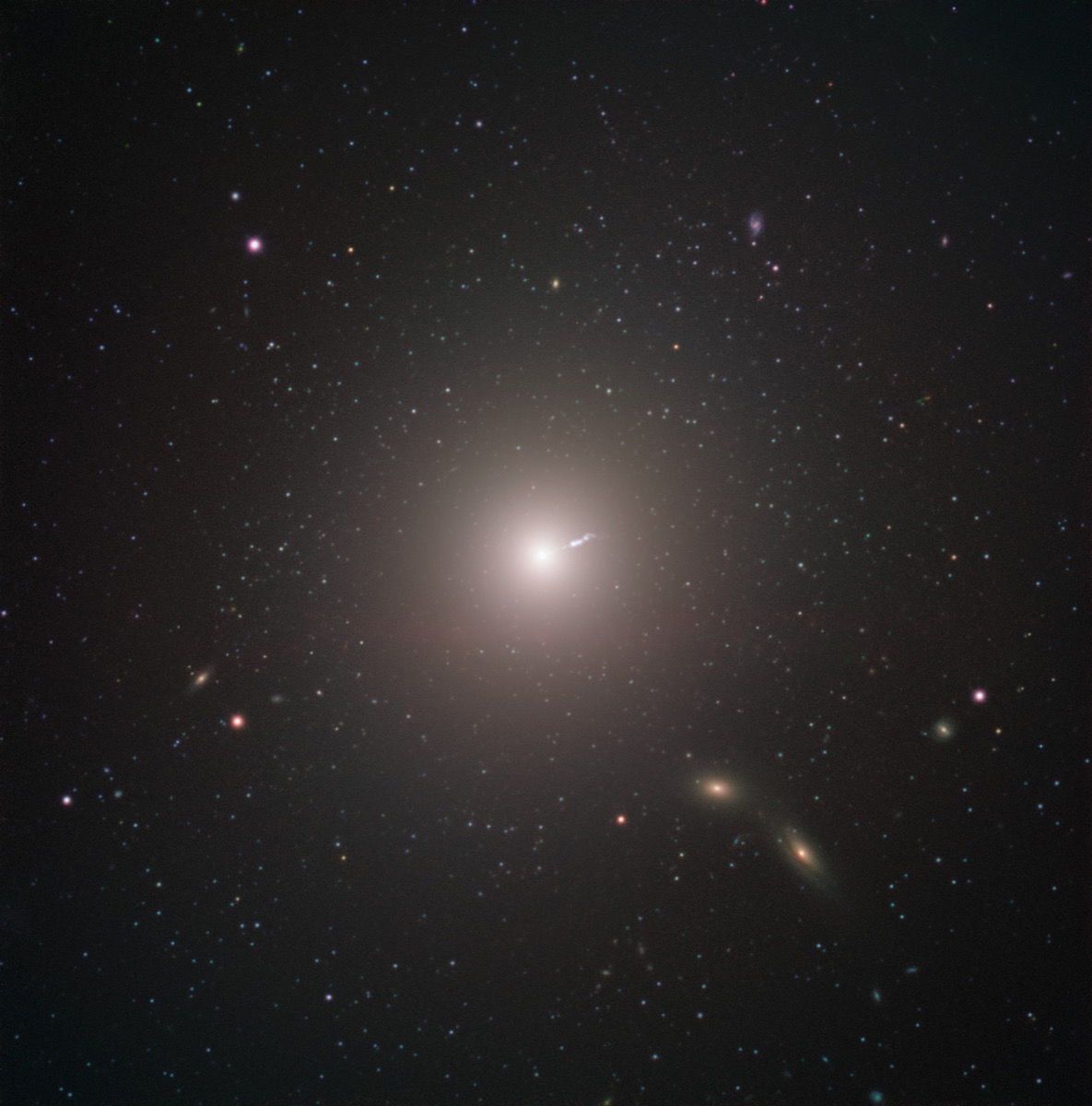
Scientifically, what did you find interesting about the Event Horizon Telescope results?
We are always trying to understand what supermassive black holes can do to their environment.
Galaxies are essentially the building blocks of our universe—the universe contains billions of them. What’s interesting is that the supermassive black hole, although very massive, is very compact. It’s very small in physical size; it is about a billion times smaller than its galaxy. Astronomers thought there might be a supermassive black hole at the center [of each galaxy], but it’s so small that it’s not going to do anything to the galaxy; it’s not going to play any fundamental role in how the galaxy turns out. And this is wrong because we found out, especially in the last 20 years or so, that although tiny in size, supermassive black holes are extremely powerful. By themselves they have enough energy to completely destroy an entire galaxy. And what we’ve been learning—especially in my research and lots of other people as well—is that supermassive black holes completely reshape the properties of galaxies. The galaxies look completely different thanks to the presence of this tiny object at the center.
So for me, it’s always been about understanding what these big, supermassive black holes do to their galaxy—what role they play in the formation and evolution of galaxies and the universe in general. This image is going to allow us to understand that even more. We’re going to learn about what happened to the gas when it gets very near the black hole when it almost falls into the black hole. In particular, once this gas settles in near the black hole, it forms the accretion disk around it—essentially a disk of matter that’s spiralling very close to the black hole. And what we do observe is that supermassive black holes can form jets of relativistic material. We see that these jets originate from these supermassive black holes. We’re not entirely sure how black holes can actually create them but we know they originate from them and these jets propagate throughout the entire galaxy. And it turns out that jets inject so much energy, and this is one of the ways that black holes can reshape the properties of galaxies.
“For me it’s always been about understanding what these big, supermassive black holes do to their galaxy—what role they play in the formation and evolution of galaxies and the universe in general. This image is going to allow us to understand that even more.”
What would you like to study next with the image and data?
I’m very interested on how the jet that’s coming from M87 is formed and just understanding the physics of where it forms. For example, if you take multiple images throughout time, if you take one this year and then another one next year, is there any evidence that the material around the black hole is changing? Is it changing a lot? We’re actually learning how material flows onto the black hole by looking at how it changes with time, so that’s super interesting. Maybe the jet is going to change, so how these structures adapt to the flow of material towards the black hole.
In the future there is also going to be instruments on the antennas of the Event Horizon Telescope that will allow you to study polarimetry—which is a concept in physics that seems very difficult, but it’s just understanding how the electric and magnetic field in light are oriented. That teaches us about the magnetic field around the black hole. What’s really amazing is that because the gravity is so strong in black holes, the magnetic fields within the material flowing towards it is going to be outstanding. We can’t even reproduce these kinds of magnetic fields in the laboratory by far. And so black holes would teach us about the strongest magnetic fields in the universe. There’s going to be a lot of energy there, what these magnetic fields do to the material, do they help in the creation of jets. So that’s what I see in the next couple of years.
Why was this a big finding for you?
This is the biggest proof that supermassive black holes actually exist. A couple of years ago, LIGO detected gravitational waves—these waves came from small black holes that merged and that was really great proof that little black holes exist. But for me that wasn’t very surprising because we understand where these small black holes come from. They come from stars that end their lives in the form of a black hole. We’re pretty sure we understand the theory behind them. Supermassive black holes are on another level. They’re still very mysterious. It’s so hard to understand how they can become that big, that massive, how the universe can actually create these structures.
This image has been the best proof that an object that is extremely massive—we’re talking about millions and billions of times the mass of our sun—exists and that the fact that we see the shadow in the image is a proof that the horizon exists on black holes, this barrier within which nothing can escape, not even light. For me that was the biggest wow factor, is supermassive black holes—they are objects from which nothing can escape—they actually exist.
Find out more about Hlavacek-Larrondo’s breakdown of the new M87 black hole data and what lies ahead in black hole research during our special segment on this week’s Science Friday, alongside EHT team members.
Invest in quality science journalism by making a donation to Science Friday.
Katie Feather is a former SciFri producer and the proud mother of two cats, Charleigh and Sadie.
Lauren J. Young was Science Friday’s digital producer. When she’s not shelving books as a library assistant, she’s adding to her impressive Pez dispenser collection.